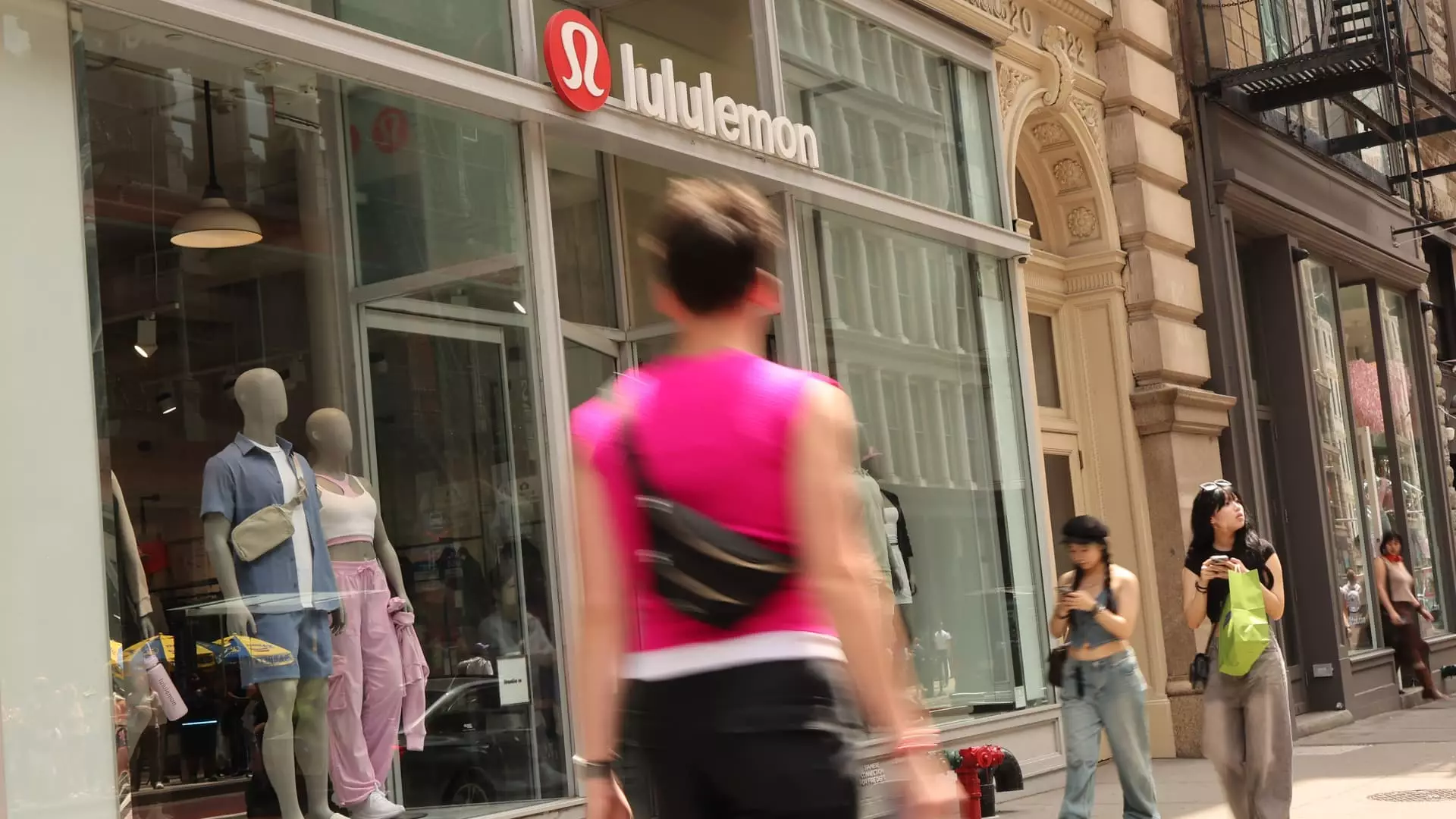Lululemon Athletica’s recent earnings report has sent shockwaves through the retail sector, with shares plummeting nearly 20% in after-hours trading despite beating earnings expectations. This discord between earnings and market reaction illustrates a fundamental mismatch between financial metrics and investor sentiment, particularly in today’s volatile economic climate. As the apparel retailer trims its full-year earnings outlook amid an uncertain macroeconomic landscape, the concerns surrounding its future trajectory are palpable.
Financial Performance Amid Uncertainty
Lululemon recorded a fiscal first quarter net income of $314 million ($2.60 per share), showing a slight increase from $321 million ($2.54) a year prior. While earnings beat expectations, the modest revenue growth to $2.37 billion, up from approximately $2.21 billion, raised eyebrows. Analysts had anticipated a more aggressive performance, particularly in light of the general consumer willingness to spend on athleisure. The lackluster comparable sales growth of just 1%, trailing projections that stood at 3%, signifies a deeper issue at play—one that is influenced heavily by external market forces.
Investors might have been prepared for a storm—predominantly due to the ongoing trade tensions and tariffs imposed during President Donald Trump’s administration. A statement from CEO Calvin McDonald made clear the company’s strategy to ‘play offense’ amid these headwinds, yet the reality is that many companies in the retail space are starting to feel the squeeze. The narrative around manufacturing and supply chain resilience is being rewritten, and Lululemon’s reliance on foreign production could prove more precarious in the months ahead.
Thermal Reactions from Wall Street
Analyzing the 20% drop in Lululemon’s stock, it’s evident that investors are not just scanning the headlines for earnings beats but are focused intently on broader economic indicators. In the wake of tariffs impacting profit margins, major clothing retailers like Gap and Nike have recently responded with price hikes, a strategy that seems fraught with risk. Setting aside the numbers, the market’s reaction reveals a market sentiment that is increasingly reactive to macroeconomic stressors rather than insular performance data.
With other competitors slashing their earnings and revenue projections, Lululemon’s cautious approach stands in stark contrast to the aggressive moves made by some of its rivals. Instead of exuding confidence, the management team’s forward guidance, now suggesting an earnings per share range of $14.58 to $14.78—down from a previous expectation of $14.95 to $15.15—brings hesitancy into sharper focus. This cautious recalibration, juxtaposed against an otherwise robust first-quarter performance, begs a question: what is Lululemon’s fundamental strategy if its primary competitors seem poised to charge forward despite similar conditions?
Strategic Implications and Competitive Advantages
While Lululemon’s appeal within the athleticwear market remains strong, the idea of leveraging competitive advantages amidst a dynamic marketplace feels more like a desperate attempt to assuage investor fears than a visionary strategy. 40% of its products manufactured in Vietnam and significant shares from other nations mean that it operates in a globally interconnected supply chain fraught with risks. The implications of geopolitical and economic factors on an apparel company are vast, particularly when operations depend heavily on external suppliers.
As Lululemon continues to assert its brand identity in a crowded field, the margins for error appear to be shrinking. While its focus on international markets is commendable—indicating an understanding of diversification—it might not adequately shield the company from the tariffs’ effect that could reach up to $150 million for competitors.
With rising inflation and consumer hesitance casting a long shadow over discretionary spending, Lululemon’s initial steps forward must prioritize innovation and a reevaluation of cost structures if it is to remain resilient. The present turbulence in the market does not merely challenge Lululemon to adapt but also propels leaders into a reflection on whether their current strategies sufficiently hedge against broader economic tides.

